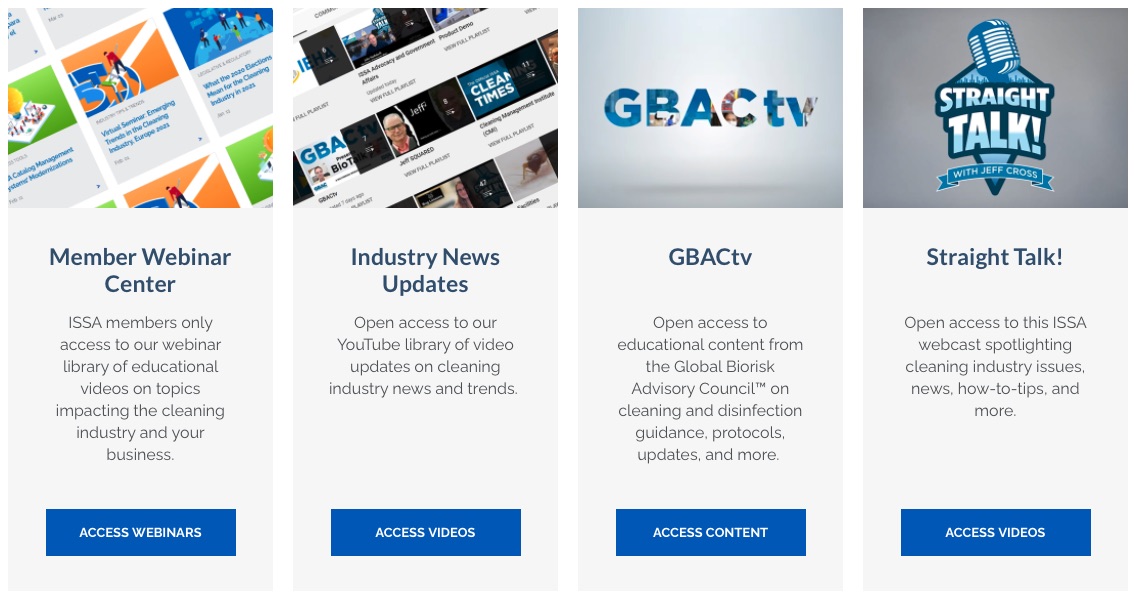Articles
What the Health?
Categories: Business Management
By TJ Bullock | January 14, 2019 << Back to Articles
ACA. FSA. HRA. HSA. Networks. Formularies. Coinsurance. Cobra. FMLA. HRP. Pre-Authorization. UCR. The list goes on and on. Do you have a headache already? Sometimes it seems the insurance companies have adopted the words of President Truman who once said, “If you can’t convince them, confuse them.” Is there a way that we can make some sense of it all?
One way to navigate this insurance world is to tap into experts in the field. Often by joining a reputable association, such as ISSA, an employer will be given access to health insurance professionals. These consultants can be like sherpas, guiding you to the summit without a casualty.
With that in mind, here are 10 tips on how an employer can cut costs, not benefits:
- Use Telemedicine
It seemed like at one time, treating a health condition via Skype was something we’d see on Star Trek. The reality is, a good “Telemedicine” program can save organizations a lot of money and provide great value. Many of these programs allow patients to connect with a doctor 365/24/7. They can diagnose, treat, and prescribe for free. These are U.S. trained and based physicians that can be contacted via Skype, Facetime, texting, or other modern methods. Or they can do it ‘old-school’ and pick up a phone and call.
According to one major Telemedicine company, 92 percent of calls are resolved, requiring no additional help or follow up. This type of service can help to keep costs down from unnecessary trips to the emergency room or an urgent care center, which can be expensive to employers.
- Establish a Health Savings Account
Your employees will spend their own money differently than they will spend yours. A Health Savings Account (HAS)-eligible plan will allow employers to take advantage of that fact. First, purchase a health plan with a high deductible. Then, with the funds the company saves, it can make tax-free contributions into its employees’ HSA accounts. These accounts have a triple tax benefit: (1) The employer contributions are tax deductible; (2) The interest earned is tax free; and (3) Account owners can make tax-free withdrawals for eligible medical expenses. Additionally, HSA contributions do not have to be used by the end of the year. It’s not “use it or lose it.” These funds can grow, interest free, for years.
- Are You Over-Insured?
The reality is you cannot insure everything in life, and yet insurance companies will often claim they can. The truth is, for the premiums companies pay, the return on investment is often very poor.
Introduce consumerism. Provide a plan that will cover catastrophic events and not every single doctor visit, prescription, etc. This will save significant money and provide employees with the protection that health insurance was meant to provide. Combine this with an HAS, and your employees will do what Americans do best— look for deals, sales, and discounts. Doctors, hospitals, and pharmacies are like other stores; some are way less expensive than others for the same quality product.
- Choose the Right Broker
Work with a broker who specializes in health insurance. Many agencies provide a one-stop shop for all your insurance needs. While this may be convenient, it’s not likely that approach is providing the right value. Health insurance has become so complicated that you need someone who lives in that world. Even in a larger agency, it is good to determine how long the person you’re working with has been brokering health insurance. What percentage of his/her business portfolio is health insurance? Often, you’ll find the low man on the totem pole within the agency is the one handling your account. Don’t be shy about requesting a more experienced individual.
- Consider Alternate Funding
When we write that check to the insurance company, that money is gone whether our employees ever have a claim or not. Funding options, such as HRAs, where you allot a certain amount of money to pay small claims, or level funding plans, where a portion of your premium is budgeted for claims, can provide a return on your investment.
- Offer Voluntary Benefits
Once considered a fringe benefit, these supplemental programs are now key to a successful employee benefit package. While the standard Life, Dental, Vision, and Disability coverage are greatly appreciated, in recent years, others have caught the attention of today’s workforce. Identity Theft Protection, Student Loan Elimination, Telemedicine, Cash Pay-Out, and other such programs— built under the protection of a high deductible health plan—can be a strategy to keep costs down for you and your employees while providing practical value.
- Join a Wellness Program
These programs encompass everything from quitting smoking and losing weight to staying active and managing stress. They can be official or unofficial, use technology or not, and have a big budget or no budget at all. You can even incentivize participation with a little competition. It’s up to you to determine what works best for your business. A recent study done by the University of Michigan indicated on the average, an unhealthy employee costs the employer US$10,000 a year whereas a healthy employee only $4,800. It’s no secret that healthier employees are the most productive and engaged.
- Shop Annually
For those old enough to remember, your mamma was right…you’d better shop around. According to a study by the Kaiser Family Foundation, only 57 percent of small businesses shop their insurance every year.
Many insurance companies increase your rates annually. One of the best ways to fight back is to negotiate bids from other insurance companies and use them as a negotiating tactic.
- Improve Employee Education
Research demonstrates that uninformed patients are less likely to use preventive services and manage their conditions, thereby being more likely to have unnecessary hospital admissions or visits to the emergency department. Employees may not always understand the low-cost options available to them on their current plan. Additionally, they frequently fail to understand the rules of the plan, costing both themselves and your organization. Increasing employee engagement through health fairs, posters, workshops, and regular employee meetings can benefit them—and you—greatly.
- Take Advantage of Freebies
One of the things the Affordable Care Act (ACA) did provide is free benefits for many of those who have insurance. However, this is not true for everyone, as some plans don’t fall under ACA requirements. But, if yours does and you utilize network providers, you may be surprised by what you can get for no cost. These include screening for depression, blood pressure, diabetes, osteoporosis, anemia, alcohol abuse, and many other conditions. Additionally, breast-feeding support, colonoscopies, diet counseling, immunizations, and dozens of other items are provided with no cost to the insured. Check out the full list of eligible preventive services at www.healthcare.gov. By utilizing these benefits, conditions can be diagnosed and managed more effectively, thereby saving money for both the employee and employer.
Like anything in life, health care can be challenging yet manageable with the right people by your side. With a little creativity and strategizing, you can win the fight.
About the Author.
TJ Bullock is an insurance expert, with over 30 years’ experience in the employee benefits industry. He is the owner of Bullock & Associates, Inc.; an agency that specializes in insurance benefits located in Chicago, IL.





